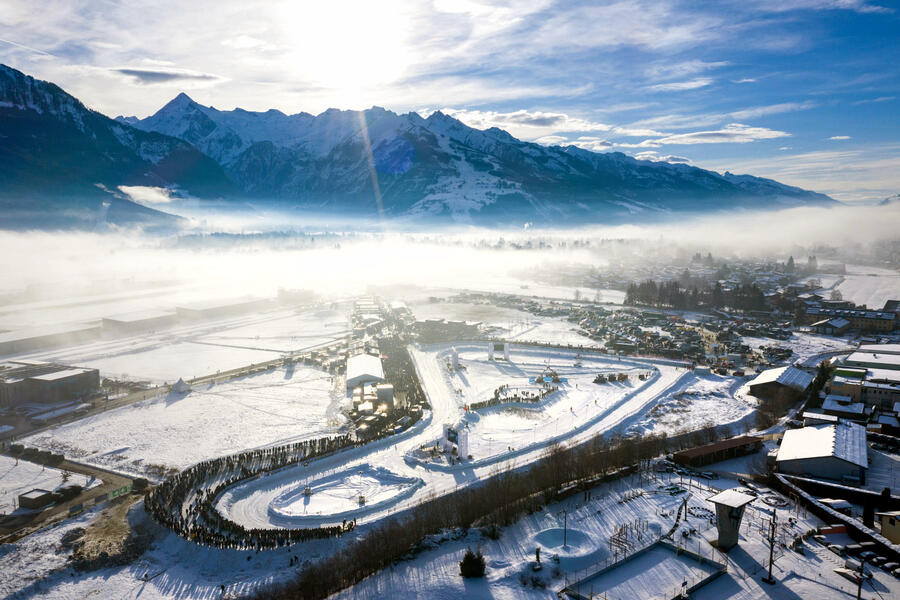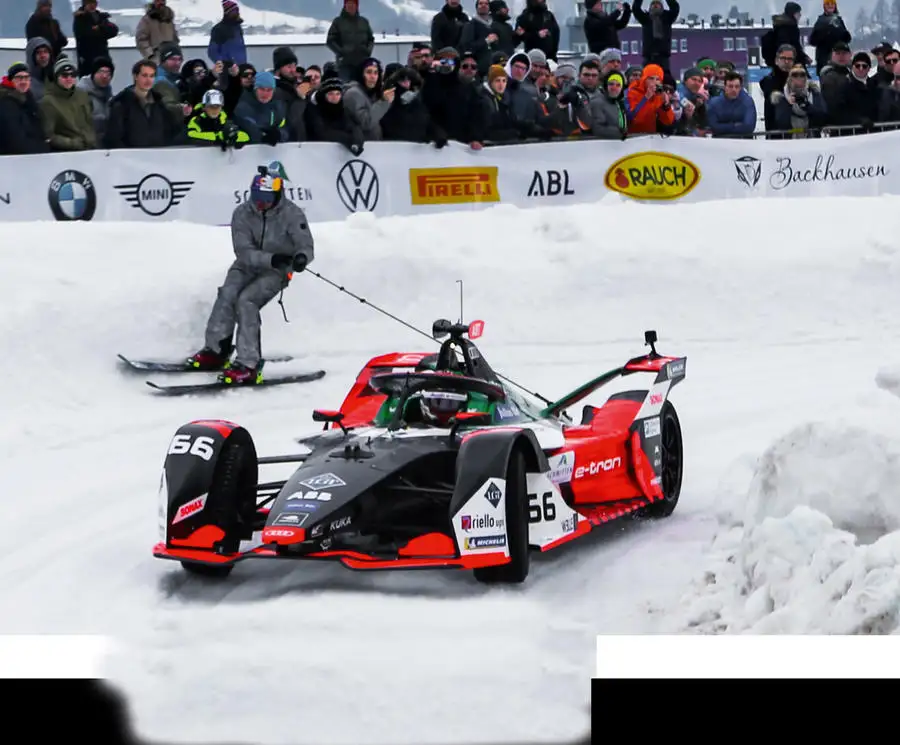[ad_1]
Welcome to the bonkers world of the GP Ice Race. You might not have heard of it yet but, after just two years, it seems poised to grow into a showcase event on the motorsport calendar: an Alpine Festival of Speed, perhaps.
Like Goodwood, the GP Ice Race is built on a long motorsport tradition. It’s centred on the bizarre discipline of skijoring, in which skiers are towed by cars. The first skijoring event in Zell am See, Austria, was held in 1937 on a frozen lake, with skiers towed by bikes. The first Dr Porsche Memorial Skijoring Race took place in 1952, before standard car races were added the next year. It became an annual tradition, although it moved from the lake to the town’s airfield in 1969 after several weather-related cancellations. But after the 1974 running was cancelled at late notice, it fell off the calendar.
The revived event features timed runs, competitive races and, brilliantly, skijoring – but it’s mostly just an excuse to gather an amazing collection of historic and modern cars for a slippy, slidy motorsport party.
The GP Ice Race even has its own equivalent of the Duke of Richmond: co-organiser Ferdinand Porsche, great-grandson of that Ferdinand Porsche. He says he decided to bring the event “back from obscurity” both to meet the growing demand for historic events and because “motorsport belongs to Zell am See”.

While Goodwood is now a slickly organised event on a massive scale, the far smaller GP Ice Race teeters just on the right side of the divide between anarchic fun and chaos (an example: the media centre was located in a bathroom showroom).
With temperatures relatively high, organisers faced a battle to keep the ice course (slightly dull, short and triangular) from becoming cut up and melting into a pool of slush. That resulted in some schedule shuffling, making an already anarchic event downright confusing.
But this shortcoming was amply compensated for by the incredible machines present, whether racing, doing demonstration runs or on static display. Modern machinery included Mitsubishi Lancers, Skoda Fabia R5s and Subaru Imprezas, while the mouthwatering historic field included numerous 911s and Volkswagen Beetles, a smattering of Saab 96s, some gorgeous classic Volvos and a handful of incredible Group B Audi Quattros. As well as giving Stig Blomqvist a run in its Formula E car, Audi reunited him with a Quattro S1 and tasked triple Le Mans winner Benoît Tréluyer with towing 1987 slalom world champion Frank Wörndl behind a 1955 DKW F91 in the skijoring.

[ad_2]
